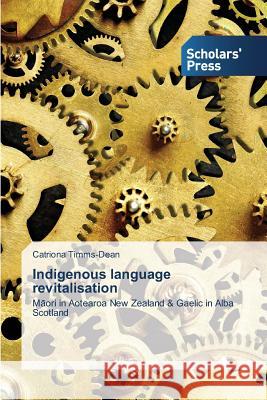Indigenous language revitalisation » książka
Indigenous language revitalisation
ISBN-13: 9783639702460 / Angielski / Miękka / 2013 / 564 str.
Language revitalisation aims to 'reverse language shift' (see Fishman, 1991; 2001), that is, to reverse the process of language decline. Language usage in the home and intergenerational transmission are fundamental to the achievement of language revitalisation. Language decline and revitalisation have become 'glocal' issues in that Indigenous communities are making global connections in order to promote local expressions of language revitalisation. This is truly a worldwide phenomenon given that it has been estimated that up to half of the world's approximately 6000 languages will be extinct by the end of the twenty-first century (Krauss, 1992). This book provides a sustained cross-national comparison of Indigenous language revitalisation practices in relation to the M ori language in Aotearoa New Zealand and Scottish Gaelic in Alba Scotland. It examines the language revitalisation strategies employed in these two countries, focusing on the contributions of language policy and planning, education, the media and popular culture to language revitalisation."
Language revitalisation aims to reverse language shift (see Fishman, 1991; 2001), that is, to reverse the process of language decline. Language usage in the home and intergenerational transmission are fundamental to the achievement of language revitalisation. Language decline and revitalisation have become glocal issues in that Indigenous communities are making global connections in order to promote local expressions of language revitalisation. This is truly a worldwide phenomenon given that it has been estimated that up to half of the worlds approximately 6000 languages will be extinct by the end of the twenty-first century (Krauss, 1992). This book provides a sustained cross-national comparison of Indigenous language revitalisation practices in relation to the Māori language in Aotearoa New Zealand and Scottish Gaelic in Alba Scotland. It examines the language revitalisation strategies employed in these two countries, focusing on the contributions of language policy and planning, education, the media and popular culture to language revitalisation.











